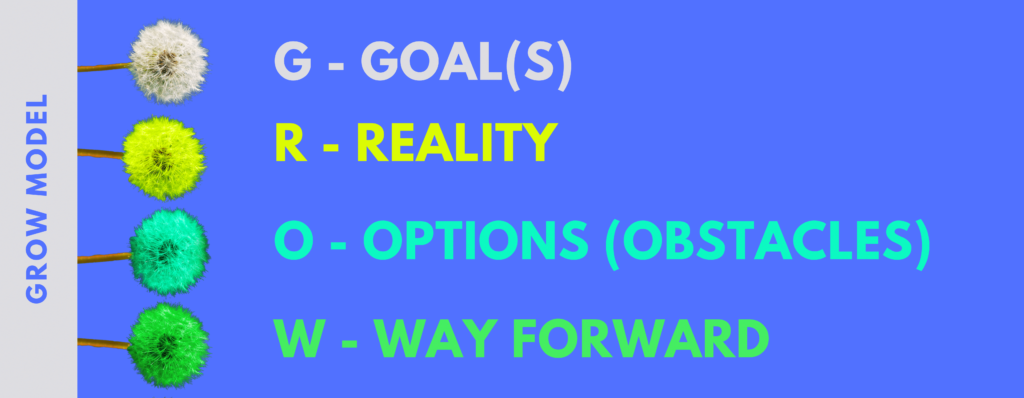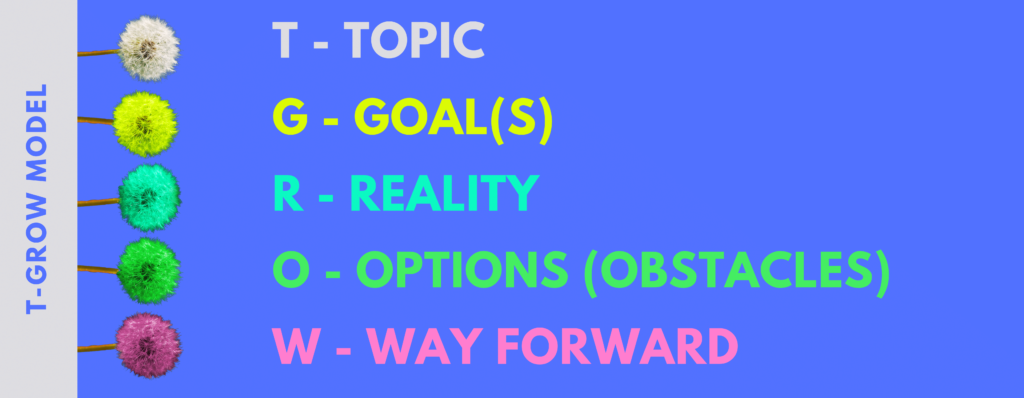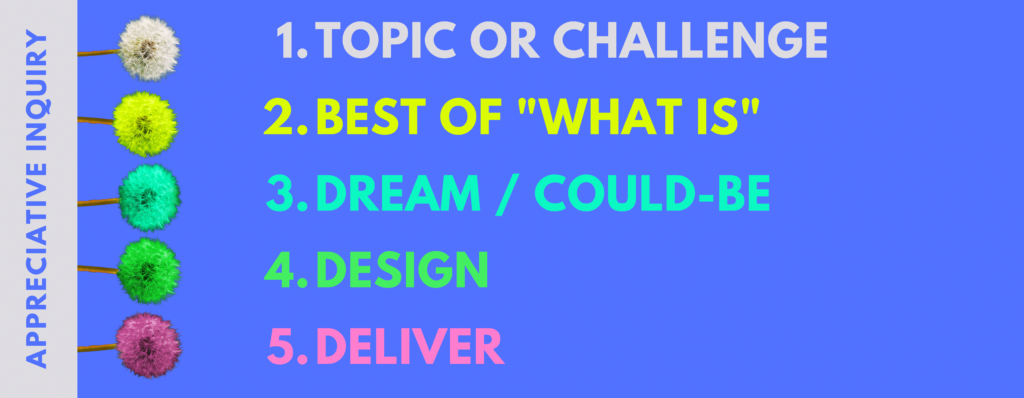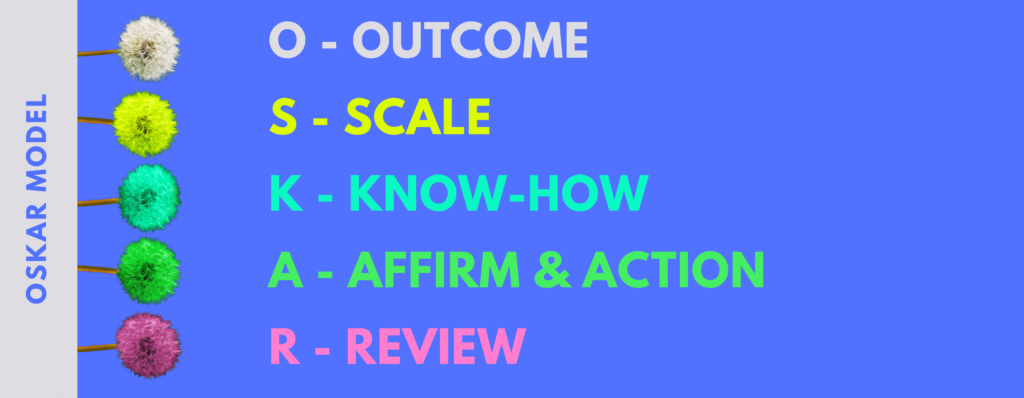
What Is A Coaching Model?
As a coach, you may have heard the term “coaching model” being tossed around.
But what does it really mean?
A coaching model is essentially a framework that guides your coaching sessions and helps you set specific goals, develop strategies, monitor progress, and evaluate outcomes. Coaching models can vary greatly depending on the coach’s specialty and the client’s needs, but they all have a few things in common: they are client-centered, goal-oriented, and action-focused.
As a coach, understanding and implementing a coaching model can help you to be more effective in your coaching sessions and can help your clients achieve their desired outcomes.
Understand The Purpose Of Coaching Models
Coaching models are a critical tool for helping coaches (and their clients) to plan, progress, and achieve. The purpose of coaching models can be summarized in five key aspects:
- Providing clarity: Coaching models provide a clear framework for you to use when working with your clients. This helps you to stay focused on the key objective of the coaching relationship.
- Achieving consistency: By using a coaching model, you can provide a consistent approach to coaching across all your clients.
- Promoting accountability: Coaching models help establish a clear path, making it easier to hold both coach and client accountable for progress and outcomes.
- Providing structure: It provides a structured process for clients to follow, so they can stay focused and motivated throughout the coaching journey.
- Allowing flexibility: Coaching models can be adapted to meet the unique needs and goals of each client, making them a versatile tool for you in a variety of coaching scenarios.
Explore Different Types of Coaching Models:
GROW Model

The GROW Model, developed by Sir John Whitmore and Alan Fine, is one of the most widely used coaching models. It consists of four stages:
1. Goals
Identifying clear and specific goals (SMART goals) that your client wants to achieve. This could be related to their career, relationships, health, or personal growth.
Coaching questions you could ask in this stage may be about the focus area your client want to work on in this session or challenges they are facing at the moment.
2. Reality
This phase aims at evaluating the current reality and understanding where they currently stand in relation to the desired outcome.
Fitting coaching questions in this stage would probe the client to think through what is not working well at present with regards to their goal, what obstacles they are facing, or even what inner dialogue they are encountering that is preventing them from moving toward their goal.
3. Options (or Obstacles)
This involves brainstorming possible paths toward the goal, as well as potential obstacles that may arise along the way. As a coach, you can help your client explore different options and develop strategies to overcome obstacles. Some of these discoveries will emerge from the answers to the questions of the previous stage. Your clients may feel like “there are no other options”, which is why this is a powerful stage to discover new, unconsidered possiblilities.
Helpful questions in this stage remove the lid, so to speak, by asking “unlimited questions” such as “If money wasn’t an object …”, or “If you had a magic wand …”. They can also be practical questions focused on prioritizing by selecting ONE THING to focus on in the coming week.
4. Way Forward
Finally, creating a plan of action to move forward and achieve their goals. The GROW Model is a simple but effective tool that empowers individuals to take charge of their lives and achieve their dreams.
Questions in this phase will gauge your client’s commitment and motivation to action and change. Who will your client involve in making the achievement happen? How much time will they set aside this week to work on moving forward toward their goal? This makes it very specific and not vague by talking about what should be done as it transitions to ownership of what will be done.
You can see a few powerful coaching questions for each phase listed here.
T-GROW

The T-GROW Model is a variation of the traditional GROW Model, which adds an extra step for exploring the client’s values and motivations.
The T-GROW Model stands for Topic, Goal, Reality, Options/Obstacles, and Way Forward. The first step, Topic, involves exploring the client’s values and motivations related to the goal. This can help ensure that the goal is aligned with the client’s deeper desires and aspirations.
Once the goal is established, the next steps are the same as the traditional GROW Model. The addition of the Topic phase in the T-GROW Model can help coaches and clients ensure that the goal is meaningful and aligned with the client’s values and motivations. This is important, because our decisions and actions are informed by our values and motivations, meaning, if we don’t take action, we don’t see value and vice versa. Identifying this early on can increase motivation and engagement, and help clients stay focused and committed to their goals.
In essence, the T-GROW Model is a variation of the traditional GROW Model that emphasizes the importance of exploring the client’s values and motivations related to the goal. By doing so, you and your clients can create a more meaningful and impactful coaching experience, and increase the chances of achieving the desired outcomes.
T-GROW vs GROW Model
Let’s say a client comes to you with the goal of getting a promotion at work. Using the traditional GROW Model, you would start by exploring the client’s goal and then move on to assessing their current situation, brainstorming options and obstacles, and developing a plan of action.
However, by using the T-GROW Model, you would first explore the topic of the client’s values and motivations related to the goal of getting a promotion. This might involve asking questions such as:
- Why is getting a promotion important to you?
- What values does a promotion align with for you?
- What motivates you to want a promotion?
- What would it mean for you if you didn’t get a promotion? What’s at stake?
By exploring these topics, you might discover that the client’s real desire is not just to get a promotion, but to feel valued and respected at work. Perhaps they feel unappreciated in their current role and believe that a promotion would change that. Or, perhaps the motivation is external, coming from expectations others have set for them.
With this deeper understanding of the client’s values and motivations, you can then move on to explore their current situation, brainstorm options and obstacles, and develop a plan of action. But now, you can do so with a more nuanced understanding of what the client really wants and needs, and can tailor your coaching approach accordingly.
By incorporating the Topic step into the process of coaching, you can ensure that the client’s goal is truly aligned with their values and motivations, and help them achieve not just the goal itself, but a deeper sense of fulfillment and satisfaction in their work.
Rogerian Argument Model

The Rogerian Argument Model is a persuasive strategy that emphasizes the importance of building rapport and understanding with the audience before presenting an argument. This approach is particularly effective in situations where there is a high degree of disagreement or conflict, as it encourages dialogue and mutual respect.
The Rogerian Argument Model has four main steps:
1. Establish common ground: Begin by acknowledging areas of agreement between yourself and the audience. This can help build rapport and establish a sense of trust.
2. Acknowledge the opposition: Recognize and validate the perspectives of those who disagree with you. This can help defuse defensiveness and create an open-minded environment.
3. Present your argument: Once you have established common ground and acknowledged the opposition, you can then present your argument in a clear and persuasive way.
4. Offer a compromise or solution: Finally, offer a compromise or solution that takes into account the perspectives of both sides. This can help create a sense of collaboration and shared responsibility.
How does this fit into the context of coaching?
An example of the Rogerian Argument Model in action might be a coach working with a group of employees who have differing opinions on a particular policy change. Instead of simply letting presenting their own perspective and trying to persuade the employees to agree, you, as the coach might use the Rogerian Argument Model to build rapport and mutual understanding.
You might begin by acknowledging the employees’ concerns and perspectives, and then work to find common ground and areas of agreement. They might then present their own perspective in a clear and respectful way, while also validating the employees’ concerns. In the end, you can offer a solution that takes all perspectives into account, perhaps leading to a modified version of the policy that addresses the employees’ concerns while still achieving the intended goals.
Appreciative Inquiry

The Appreciative Inquiry Model is a coaching approach that focuses on building upon an individual or team’s strengths and successes rather than dwelling on problems and weaknesses (being appreciative of the good we already have). This model can be highly effective in coaching, as it can help to create a more positive and productive environment where individuals feel valued, engaged, and motivated to achieve their goals.
As a coach, you can use Appreciative Inquiry by focusing on the these five steps:
- Define the Topic: The first step in Appreciative Inquiry is to define the topic or issue you want to explore. This could be a specific challenge that an individual or team is facing, or it could be a broader goal or objective that they want to achieve.
- Discover the Best of What Is: The next step is to discover the best of what is currently happening in relation to the topic. This involves identifying the strengths, successes, and positive experiences that have already been achieved by the individual or team.
- Dream: After identifying the best of what is, the next step is to dream about what could be. This involves exploring new possibilities and envisioning a future state that is even more positive, productive, and successful.
- Design: Once the client has envisioned their ideal future state, you’ll begin to help them design a plan of action for achieving it. This involves identifying the specific actions, resources, and support that will be needed to turn their vision into a reality.
- Deliver: The final step in Appreciative Inquiry is to deliver on the plan of action and implement the changes needed to achieve the desired future state.
You can use Appreciative Inquiry to help clients overcome challenges and achieve their goals by:
- Focusing on strengths and positive experiences rather than problems and weaknesses.
- Encouraging individuals and teams to envision a positive future state and develop a plan of action for achieving it that is driven by possibilities, not pressures.
- Providing support, resources, and guidance to help individuals and teams implement their plans and achieve their goals.
CLEAR Coaching Model

Peter Hawkins’ Clear Coaching Model provides a roadmap to an effective, results-focused coaching relationship. It begins with the Contract stage—agreement on goals and expectations between coach and client—and progresses through Listen, Explore, and Action phases before finally reaching Review in order to measure progress achieved against objectives set at the beginning of their journey together.
Contract
In this stage, you and client work together to establish a clear understanding of the coaching objectives and goals. You ensure that both of you agree on the scope of the coaching relationship and establish clear guidelines for the coaching sessions.
Listen
During this stage, you, as the coach actively listen to the client’s concerns and experiences, without judgment or interruption. You may use questioning techniques to help the client explore their thoughts and feelings further.
Explore
Here, you and client work together to explore different options and possibilities for achieving the client’s objectives. You may use techniques such as brainstorming, goal-setting, and action planning to help the client clarify their goals and identify steps to achieve them.
Action
In this stage, your client begins to take action towards achieving their goals. You may provide support and accountability to help your client stay on track and maintain their motivation.
Review
During this stage, you and your client reflect on the progress made toward the coaching objectives and evaluate the effectiveness of the coaching relationship. This stage allows for feedback and continuous improvement.
OSKAR Coaching Model

With a five-step process, this model of coaching emphasizes outcomes, scales, and know-how to help individuals identify their goals and achieve success.
Outcome
Start by defining the outcome this helps bring clarity to what the individual wants to achieve.
Scale
Then, work together to create a scale, which breaks down the outcome into smaller, achievable steps.
Know-how
Know-how is a key component, as the coach helps the individual develop the skills and knowledge needed to achieve their goals.
Affirm & Action
Affirmation and action serve as motivators to stay on track and complete each step.
Review
The review step helps both you and your client to reflect on progress and make any necessary adjustments.
Cognitive Behavioral Model
One of the most popular coaching models in recent years has been the Cognitive Behavioral Model, which is based on the idea that our thoughts impact our behaviors and emotions. By utilizing this model, you can help your clients identify negative thinking patterns and replace them with constructive ones.
Additionally, this model also emphasizes the importance of setting attainable goals and developing an action plan to achieve them. The Cognitive Behavioral Model is a powerful tool that can help professional coaches guide their clients toward reaching their full potential.
Understanding coaching models is crucial for any coach who aims to deliver optimal results for their clients. To effectively help your clients, you must first consider their individual needs, and this means taking a client-centric approach to coaching. You need to put the individual needs of your client at the forefront of the coaching process and tailor your coaching conversation to address each client’s unique circumstances.
This will allow you to develop effective coaching conversations that can effectively help clients achieve their desired outcomes, especially when paired in your coaching process with great open-ended questions and proven coaching techniques.
It is important to note that coaching frameworks or models are not one-size-fits-all solutions. It is your responsibility to evaluate your client’s needs before determining the most appropriate coaching approach.
Stay Adaptable
If you remain open to change and can pivot your approach based on individual circumstances, you will not only benefit your client but also continue to develop your coaching skills and effectiveness as a coach.
By adapting to different coaching scenarios and staying receptive to feedback, you can ensure you are providing the best support for your clients and continually improve their abilities.
Continuously Learn And Grow
Just like any other profession, coaching requires continuous improvement and development. This not only benefits you as the coach but also the clients you work with.
- Attend training sessions, workshops, and conferences. They provide helpful insights and varied perspectives on coaching that can help you improve your coaching skills and adapt to new coaching challenges. It may be worth considering setting a professional learning goal for yourself in this area – after all, we should aspire to grow and be the best version we can be for our clients.
- Network with other coaches to exchange ideas, share experiences, and best practices, and gain valuable feedback on your coaching methods. You could consider peer coaching to do this. It will also help you to stay accountable and get outside of your own headspace.
- Reflection after each session is crucial for identifying areas requiring improvement whilst appreciating the progress made. You only need a few minutes to do so and the payoff is tenfold.
- Additionally, it benefits you to read literature, blogs, and research papers to keep up-to-date with trends and groundbreaking discoveries within the coaching profession.
Learn How To Use Coaching Models To Improve Your Coaching Methodologies
Through exploring different models, you can learn how to utilize these coaching tools to create a positive and empowering experience in your relationships with clients. To truly succeed as a coach, it’s important that you are flexible, adaptive, and continuously learning and growing in this field.
As you explore more of the various types and components of coaching models, you’ll develop even greater insights into how they can be applied in your own practice. This exploration is a great way to begin your coaching journey of becoming a truly transformative coach who changes lives.

